
Buy experiences, not things
Keith Tuffley
Dec / 12 / 2017
Most of us love to ride in beautiful destinations in spring and summer. Places like Sicily, Provence and Tuscany, where the 25°C conditions and glowing sun keep us warm and comfortable.
Many of us also enjoy the chilly feeling that often comes with cycling up great mountain passes, such as Passo dello Stelvio, Col du Galibier and Saint Gotthard. Temperatures of 10-15°C are easy when the views are that good.
Even cold conditions – an early morning ride in late autumn and winter, where it may be only 5°C - are enjoyable provided we are kitted up head to toe with the best cycling clothing.
But what’s it like to cycle when it’s -30°C? Or even worse, when the 50km/h wind creates a wind-chill factor of -52°C?
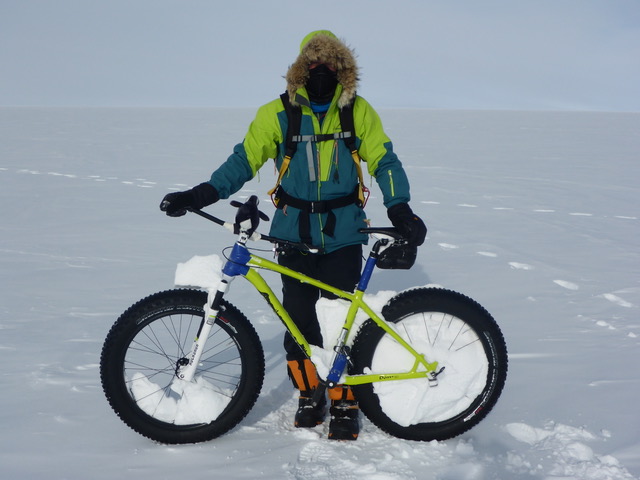
Well I decided to test it out 12 months ago when I embarked on an expedition to the South Pole on my fat bike. And having decided it would be an unsupported and unassisted expedition, this meant having to tow a sled with all my food and equipment to survive 40 days in the Antarctic wilderness, weighing more than 95kg (210 pounds).

On top of this, my team-mates and I wanted to pioneer a new route to the Pole, all the way from the Antarctic coastline on the Ross Ice Shelf, through the Transantarctic Mountains, and up one of the most southerly glaciers in the world. This meant we had little idea what the conditions and terrain would be like, whether the massive crevasse field near the top of the glacier would be passable, and whether the 160km long glacier would be covered in deep snow on which it would be impossible to ride.
Transitioning from a road bike on the smooth roads of the European Alps to a fat bike on soft snow – and towing a 95kg sled - is not easy. But the principles are the same … find a sustainable rhythm, spin those legs at a good cadence, try to get into a peloton when the wind is blowing, and watch out for the road traffic. Well actually, that’s not quite true. Riding the fat bike over uneven sastrugi (big bumps in the snow caused by high winds), with a 50km/h headwind, up a gradient of 5°, not another bike in sight let alone within 1,000km, and certainly no road traffic, makes it a very different riding experience. At times, my cadence was less than 20 rpm, and my speed was slower than walking pace.
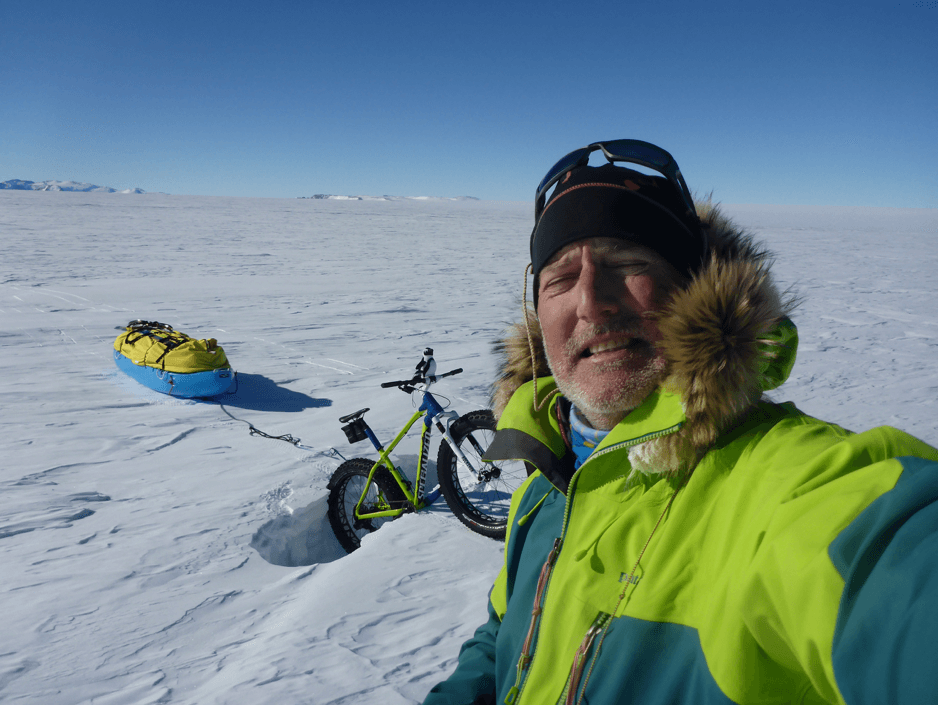
But I got there in the end. 34 days and 620km on a new route from the coast to the Pole, on a glacier never previously traversed by humans, and with no frostbite to show. Just one case of painful snow-blindness, a number of exhausting days, several instances where one of my wheels got stuck in a small crevasse, and one very scary experience of dropping head-first down a crevasse and hanging downwards, tied to my bike and sled, looking into nothingness, with the bottom about 3km below me. The world’s first unsupported, unassisted, bike-ride from the coast to the Pole ... and on a new route too!
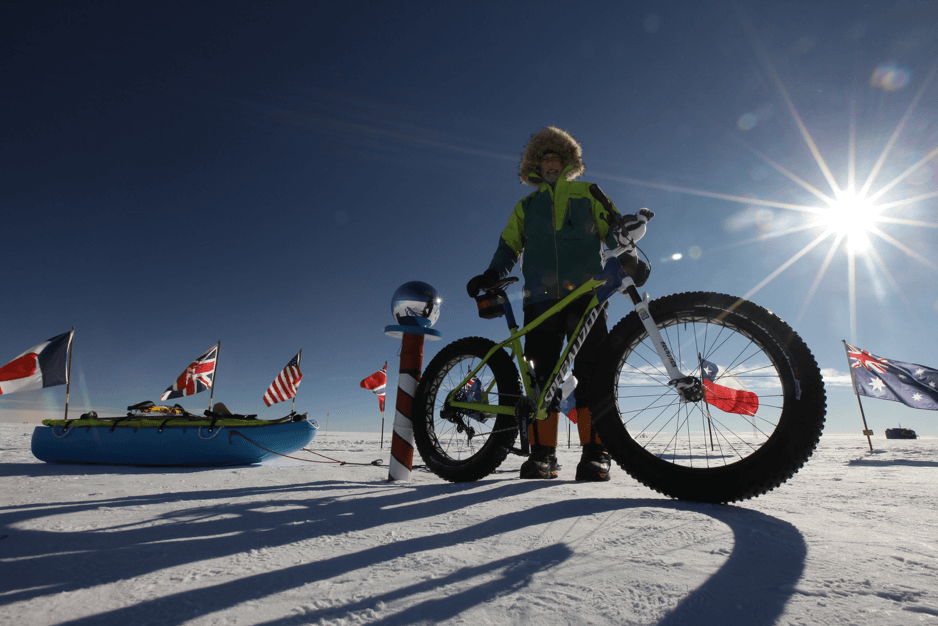
My two team mates – Eric and Rob – were far more sensible by not taking bikes and instead skiing the full distance to the Pole. At times, I was much faster than them, especially on the Ross Ice Shelf and on the glacier where the pocketed ice was ideal for my bike and sled that skidded across the surface. But on other times, I was slower – especially with the sastrugi and headwind once we arrived onto the Antarctic Plateau. And in fact, once the snow became too deep and soft, I had to admit defeat and tie my bike on top of my sled and use my skis instead.
I had many unique experiences on this expedition, but one of them was celebrating Christmas Day on the ice, in the middle of nowhere in the Antarctic wilderness, with nothing Christmassy at all … no tree, no decorations, no flashing lights, no toys, and no presents. Well we did have a few very small presents, such as a tiny bottle of whisky from Rob (sadly, I don’t drink whisky, so this was wasted on me!).
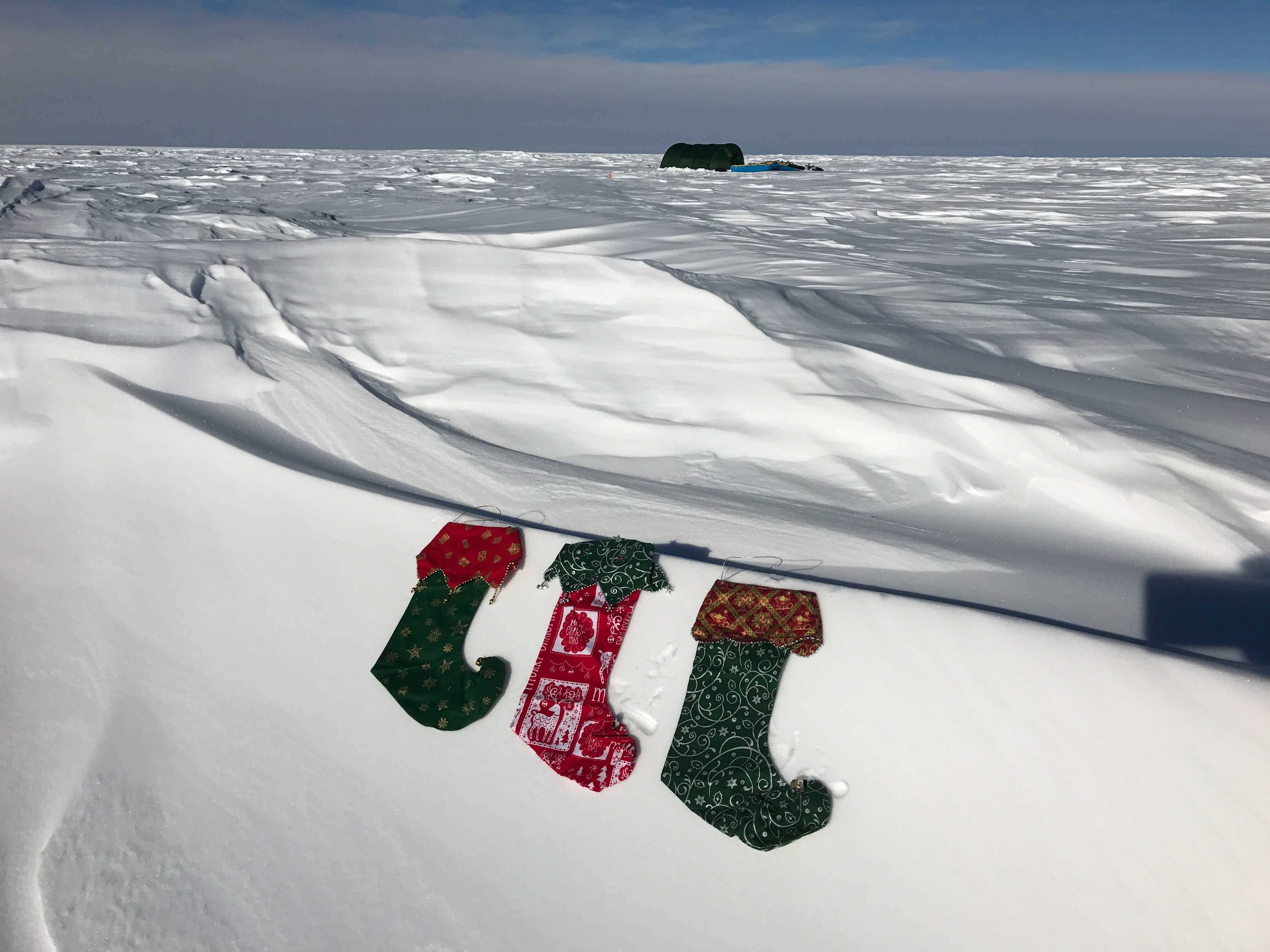
But I couldn’t have celebrated a more rewarding Christmas. For me, Christmas 2016 was all about extraordinary experiences – the challenge of cycling to the South Pole in the cold and with the high winds, the raw feeling of pure wilderness, and the fun and laughter with my team-mates every day of our journey.
The simple fact is that our dear planet needs humans to create a “post-consumer” society. Our addiction to over-consumption is gradually killing our home, our planet, and we somehow must do more, to consume less. Of course this is easy to say and very hard to do. It’s also hypocritical of me even saying this, as I needed a fat bike and a sled with 95kg of equipment and food to get me to the Pole. But the more we can spend our resources on experiences, and the less on the consumption of unnecessary products, the healthier our planet will be.

And in any event … doing something extraordinary, different, or new … with family and friends … is far more enjoyable. And even more so is the act of giving a family member or friend a good experience.
So as we approach the 2017 Season for Giving, as you think about what to give your loved ones, I encourage you to dream up a great experience that can be remembered forever. It doesn’t need to be a bike ride to the South Pole, it doesn’t even need to be a Grand Tours Project bike holiday!
Just any good experience.
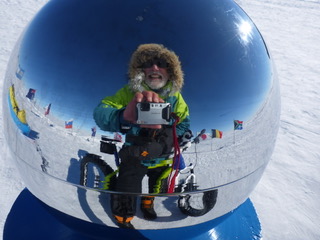
Did you enjoy reading this story? Be sure to sign up for our newsletter below or click here to check out our blog.